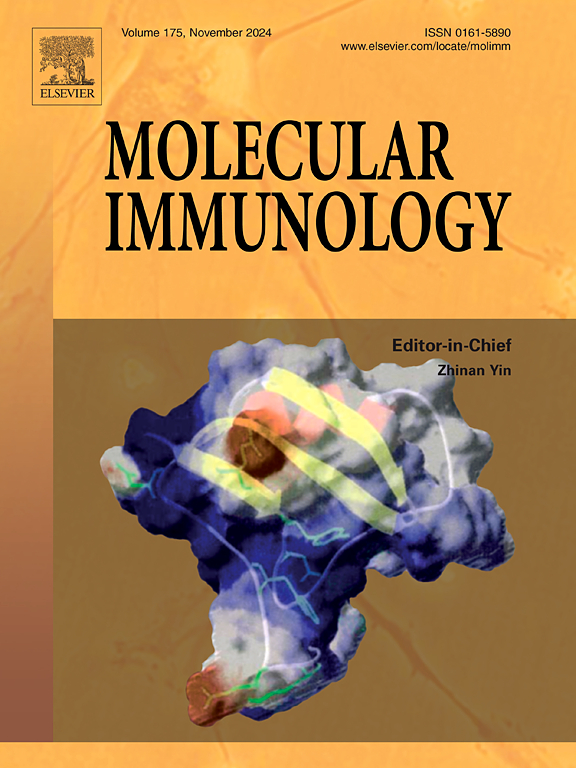MicroRNA-770 promotes polarization of macrophages and hemorrhoids by suppressing RYBP expression and monoubiquitination of histone H2A on Lys119 modification
IF 3.2
3区 医学
Q2 BIOCHEMISTRY & MOLECULAR BIOLOGY
引用次数: 0
Abstract
Hemorrhoid disease (HD) is a common proctological condition whose onset is associated with an abnormal inflammatory microenvironment; however, the underlying mechanisms remain unclear. In this study, pathological examination revealed a significant increase in MΦ1 macrophages in the hemorrhoidal tissue of patients with HD, along with elevated levels of inflammatory factors. qPCR results demonstrated that the expression of several members of the DLK1-DIO3 microRNA cluster, particularly miR-770, was significantly higher in the hemorrhoid tissue of patients with HD than in that of the control group. Luciferase reporter assays confirmed that RYBP is a target gene negatively regulated by miR-770. Additionally, qPCR and western blot analyses indicated that overexpression of miR-770 significantly downregulated the expression of PRC1 family genes and RYBP in THP-1 cells, while concurrently upregulating the expression of inflammatory factors such as NFKB, IL1b, IL4, TNF, and IFNG. The overexpression of miR-770 significantly induced the polarization of THP-1 cells toward MΦ1. Mechanistic studies using ChIP-seq revealed that miR-770 overexpression significantly reduced the number of gene promoters in MΦ1 cells that bind to histone H2AK119-Ub sites. Furthermore, the number of enriched DNA fragments from genes that bind to the + 1 transcription start site of histone H2AK119-Ub, such as NFKB1, IL1B, and TNF, was significantly lower than that observed in the control group. Therefore, we confirmed that miR-770, a genomic imprinted member of the DLK1-DIO3 region, negatively regulated the expression of the PRC1 family member RYBP, reduced the level of ubiquitination modification at histone H2AK119-Ub, and promoted the transcriptional activation of pro-inflammatory genes. This ultimately leads to MΦ1 polarization and the release of inflammatory factors, elucidating the epigenetic mechanisms underlying the occurrence of hemorrhoids.
MicroRNA-770通过抑制RYBP的表达和Lys119修饰组蛋白H2A的单泛素化,促进巨噬细胞和痔疮的极化
痔疮病(HD)是一种常见的直肠疾病,其发病与异常炎症微环境有关;然而,潜在的机制仍不清楚。本研究病理检查显示HD患者痔疮组织中MΦ1巨噬细胞明显增加,炎症因子水平升高。qPCR结果显示,在HD患者的痔疮组织中,DLK1-DIO3 microRNA簇的几个成员,特别是miR-770的表达明显高于对照组。荧光素酶报告基因检测证实RYBP是miR-770负调控的靶基因。此外,qPCR和western blot分析表明,过表达miR-770可显著下调THP-1细胞中PRC1家族基因和RYBP的表达,同时上调NFKB、IL1b、IL4、TNF和IFNG等炎症因子的表达。过表达miR-770显著诱导THP-1细胞向MΦ1方向极化。ChIP-seq机制研究显示,miR-770过表达显著减少MΦ1细胞中结合组蛋白H2AK119-Ub位点的基因启动子数量。此外,与组蛋白H2AK119-Ub + 1转录起始位点结合的基因(如NFKB1、IL1B和TNF)中富集的DNA片段数量显著低于对照组。因此,我们证实了DLK1-DIO3区域的基因组印迹成员miR-770负调控PRC1家族成员RYBP的表达,降低组蛋白H2AK119-Ub的泛素化修饰水平,促进促炎基因的转录激活。这最终导致MΦ1极化和炎症因子的释放,阐明了痔疮发生的表观遗传机制。
本文章由计算机程序翻译,如有差异,请以英文原文为准。
求助全文
约1分钟内获得全文
求助全文
来源期刊

Molecular immunology
医学-免疫学
CiteScore
6.90
自引率
2.80%
发文量
324
审稿时长
50 days
期刊介绍:
Molecular Immunology publishes original articles, reviews and commentaries on all areas of immunology, with a particular focus on description of cellular, biochemical or genetic mechanisms underlying immunological phenomena. Studies on all model organisms, from invertebrates to humans, are suitable. Examples include, but are not restricted to:
Infection, autoimmunity, transplantation, immunodeficiencies, inflammation and tumor immunology
Mechanisms of induction, regulation and termination of innate and adaptive immunity
Intercellular communication, cooperation and regulation
Intracellular mechanisms of immunity (endocytosis, protein trafficking, pathogen recognition, antigen presentation, etc)
Mechanisms of action of the cells and molecules of the immune system
Structural analysis
Development of the immune system
Comparative immunology and evolution of the immune system
"Omics" studies and bioinformatics
Vaccines, biotechnology and therapeutic manipulation of the immune system (therapeutic antibodies, cytokines, cellular therapies, etc)
Technical developments.
 求助内容:
求助内容: 应助结果提醒方式:
应助结果提醒方式:


